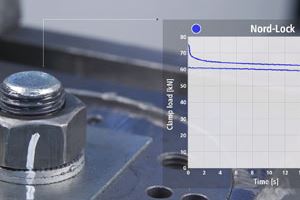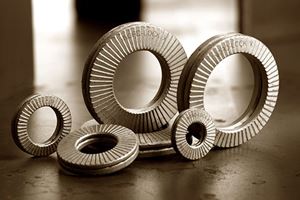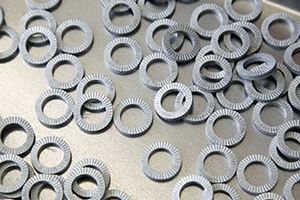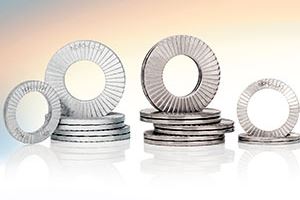Introducing the Junker Test
The most rigorous method for testing bolted joints is known as a Junker test. Thanks to their unique design and high quality standards, Nord-Lock’s products consistently outperform the competition in this challenging test environment.
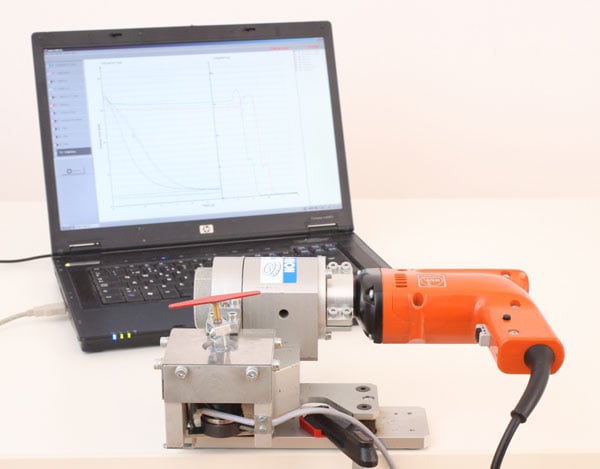 As the loosening of bolted joints has been a problem ever since the bolt was invented, numerous studies have been carried out on this phenomenon. In the 1960s, German professor Gerhard H. Junker discovered that shear loading perpendicular to the fastener axis is the most severe form of loading for vibration-induced loosening. The testing method he devised, in which a joint is mounted on a test rig and exposed to a simulated vibration at a right angle to the joint, subsequently became a DIN standard – DIN 65151 – and is commonly known as the Junker test.
As the loosening of bolted joints has been a problem ever since the bolt was invented, numerous studies have been carried out on this phenomenon. In the 1960s, German professor Gerhard H. Junker discovered that shear loading perpendicular to the fastener axis is the most severe form of loading for vibration-induced loosening. The testing method he devised, in which a joint is mounted on a test rig and exposed to a simulated vibration at a right angle to the joint, subsequently became a DIN standard – DIN 65151 – and is commonly known as the Junker test.
To prove the reliability of its products, Nord-Lock runs 400 Junker demonstrations worldwide, every week, in the presence of its customers. In addition, nearly 100 customer-specific Junker tests are carried out in Nord-Lock’s laboratories every year.
Harlen Seow, Sales Manager at Nord-Lock, is confident that Nord-Lock’s products will continue to pass this rigorous test, thanks to their unique design, along with the company’s commitment to quality and safety through technical verifications.
“Nord-Lock’s products consistently do well because, unlike most fasteners on the market today, they rely on tension rather than friction to secure the joint. As this is the most challenging test available, a method that passes a Junker test is also likely to perform well in real-life applications,” he says.
